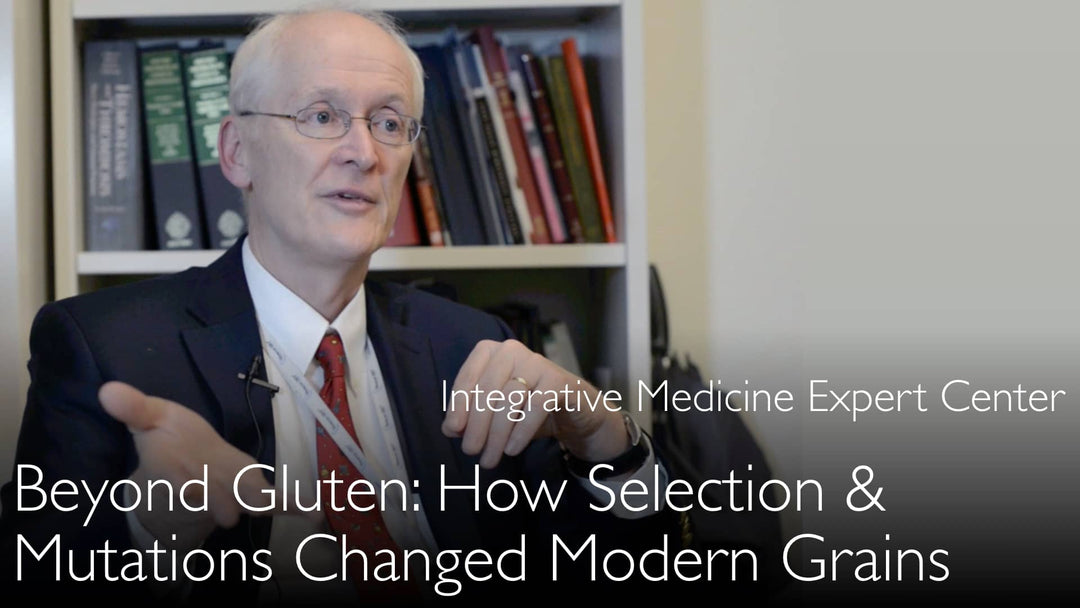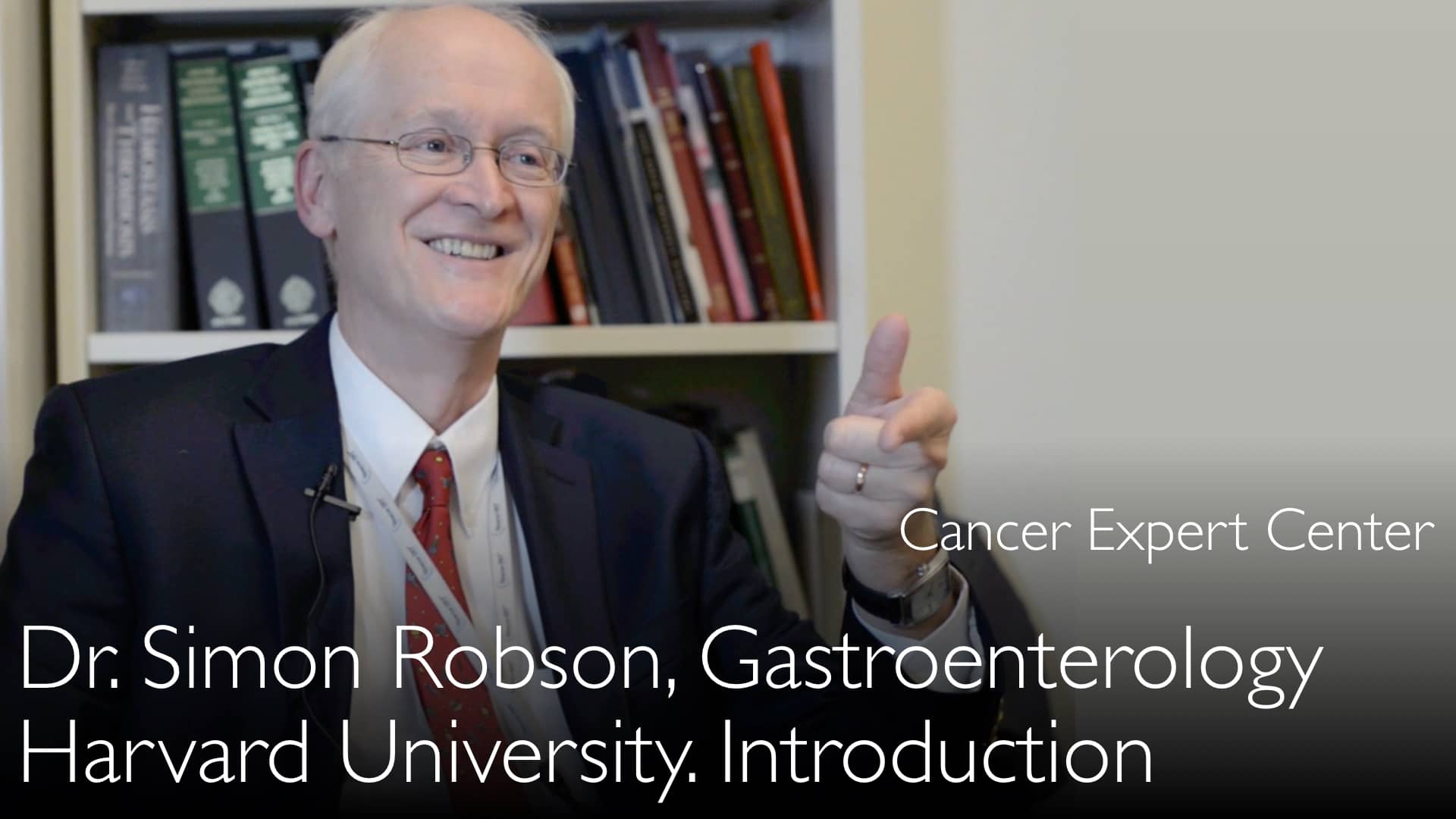מומחה מוביל בגסטרואנטרולוגיה ומחלות כבד, ד"ר סיימון רובסון, MD, מסביר כיצד חיטה שעברה מוטציה מקרינה עלולה לגרום לרגישות למזון. מוטגנזה אקראית מקרני רנטגן וכימיקלים שינתה חלבוני חיטה שאינם גליאדין. רכיבים משונים אלה עלולים לפגוע בדופן המעי ולעורר תגובות חיסוניות. ד"ר סיימון רובסון, MD, דן בקשר בין חיטה מודרנית למחלות אוטואימוניות. הוא מדגיש את החשיבות של בחינה מעבר לאי-סבילות לגלוטן לצורך אבחון מלא.
מעבר לאי-סבילות לגלוטן: כיצד חיטה שעברה מוטציה בקרינה משפיעה על בריאות המעי
קפיצה לפרק
- תהליך המוטציה בחיטה
- חלבונים שאינם גליאדין ופגיעה במעי
- מנגנוני תגובה חיסונית
- אתגרים אבחוניים ברגישות למזון
- השלכות קליניות עבור מטופלים
- תמליל מלא
תהליך המוטציה בחיטה
ד"ר סיימון רובסון, MD, מפרט את השינויים ההיסטוריים בחיטה במהלך המהפכה הירוקה. הוא מסביר כי החיטה לא שונתה גנטית באופן ישיר ומבוקר במעבדה. במקום זאת, היא נחשפה לקרינת רנטגן אקראית ולמוטגנזה כימית. תהליך זה גרם לשינויים אקראיים בגנום החיטה כדי ליצור תכונות רצויות כמו שיבולים גדולות יותר וזנים ננסיים לתנובה גבוהה יותר. ד"ר סיימון רובסון, MD, מדגיש שמוטגנזה אקראית זו שונה משינוי גנטי ממוקד. האופי האקראי של שינויים אלה משמעו שרבים מהמרכיבים המשונים בחיטה המודרנית נותרים בלתי ידועים.
חלבונים שאינם גליאדין ופגיעה במעי
הראיון עם ד"ר סיימון רובסון, MD, חורג מעבר לגלוטן כדי לדון במרכיבים בעייתיים נוספים בחיטה. הוא מדגיש שמוטגנזה בקרינה שינתה חלבונים שאינם גליאדין, לא רק גליאדין. דוגמה מרכזית היא מעכבי טריפסין עמילאז, הקיימים כעת בחיטה בריכוזים גבוהים. ד"ר סיימון רובסון, MD, מסביר שמרכיבים שאינם גליאדין אלה יכולים לפגוע ישירות בדופן המעי. פגיעה זו יכולה להתרחש independently ממסלולים קלאסיים של אי-סבילות לגלוטן או צליאק. נוכחות חלבונים משונים אלה מצביעה על כך שרגישות לחיטה עשויה להיות בעיה רחבה יותר מרגישות לגלוטן בלבד.
מנגנוני תגובה חיסונית
ד"ר סיימון רובסון, MD, מתאר כיצד חלבוני חיטה שעברו מוטציה יכולים לעורר מחלה. הוא מתייחס לעבודתם של מומחים אחרים בתחום, כמו פרופ' דטלף שופן. מולקולות שאינן גליאדין עשויות להיקשר למולקולות מסוג HLA, ולהפעיל תגובה אוטואימונית. מרכיבים אחרים יכולים להפעיל מנגנונים חיסוניים מולדים על ידי קישור לקולטני Toll. ד"ר רובסון מבהיר שזה יכול להוביל למגוון של בעיות קליניות ותת-קליניות. תסמינים עשויים לכלול עייפות, הפרעות נוירולוגיות ולחץ כללי, שלרוב מיוחסים לרגישות לגלוטן.
אתגרים אבחוניים ברגישות למזון
ד"ר סיימון רובסון, MD, דן בקושי באבחון רגישות לחיטה שאינה צליאק. בניגוד למחלת הצליאק, אין בדיקת דם או ביופסיה חד-משמעית לאישורה. אבחון מחלת הצליאק מסתמך על בסיס קליני ספציפי, בדיקות דם וביופסיה מעיתית המדגימה נזק ישיר. ד"ר סיימון רובסון, MD, מציין שרבים ממקרי הרגישות לגלוטן המדווחים עצמית חסרים הוכחה מדעית מוצקה. הוא מציע שהאמינות של טיפול באמצעות הימנעות מגלוטן עדיין נחקרת. אי-ודאות אבחונית זו היא הסיבה לחשיבות של חוות דעת רפואית נוספת לאישור מחלת הצליאק או לחקירת גורמים אחרים כמו מחלת קרוהן או קוליטיס כיבית.
השלכות קליניות עבור מטופלים
ד"ר אנטון טיטוב, MD, וד"ר סיימון רובסון, MD, בוחנים את ההשפעה המעשית של ממצאים אלה. מטופלים החווים בעיות מעי בלתי מוסברות או תסמינים אוטואימוניים צריכים לשקול את החיטה המודרנית כגורם אפשרי. ד"ר רובסון מייעץ שהפתרון עשוי לכלול הפרדה בין חיטה שעברה מוטציה בקרינה למקורות דגנים טבעיים יותר. הוא מזהיר שאימוץ דיאטה נטולת גלוטן בלבד עלול לא לטפל בפגיעות הנגרמות על ידי חלבונים שאינם גליאדין. הבנה שהחיטה עצמה השתנתה היא צעד קריטי עבור מטופלים וקלינאים המטפלים ברגישויות מורכבות למזון ובמחלות אוטואימוניות.
תמליל מלא
ד"ר אנטון טיטוב, MD: עלינו להתקדם מעבר לאי-סבילות לגלוטן בדיון על תזונה מיטבית. חיטה שעברה מוטציה בקרינה מכילה מרכיבים רבים אחרים שאינם גליאדין שעברו שינוי ויכולים להוביל לנזק בדופן המעי. מומחה מוביל בגסטרואנטרולוגיה ומחלות כבד דן כיצד קרינה וכימיקלים שינו דגנים.
מוטגנזה אקראית של חיטה possibly הגבירה את הסיכון למחלות אוטואימוניות.
ד"ר סיימון רובסון, MD: דיאטות נטולות גלוטן פופולריות among מטופלים who consider themselves "רגישים לגלוטן". זה לא רק about תכולת הגלוטן בחיטה ובדגנים אחרים. גם חלבונים שאינם גליאדין עברו מוטציה על ידי קרינה and selection.
מרכיבים שאינם גליאדין בחיטה יכולים ליצור רגישות מעית. עלינו להביט מעבר לאי-סבילות לגלוטן כדי להבין רגישות למזון today. חיטה שעברה מוטציה בקרינה שינתה את אספקת המזון שלנו.
קרינה מייננת מפציצה חיטה on a random basis and can lead to modification of many grain proteins. מעכבי טריפסין present in wheat in high amounts and can damage the intestinal wall.
In cases of gluten intolerance and celiac disease, a medical second opinion helps to make sure the celiac disease diagnosis is correct and complete. A medical second opinion also helps to choose the best treatment for celiac disease, Crohn's disease, or ulcerative colitis.
ד"ר אנטון טיטוב, MD: Selection and chemical modification create useful mutants, but mutant wheat is bred with radiation. We do not know which components of wheat are mutated or how.
Random irradiation and chemical mutagenesis of wheat is worse than genetic modification. Indiscriminate mutagenesis is what's wrong with modern wheat.
Patients might be allergic to other grain components. It is going beyond gluten intolerance. We have to consider separation of radiation-mutated wheat from more natural grain sources.
There could be a difference between wheat sensitivity and gluten sensitivity. Other components of the wheat can cause injury to the intestines and liver.
ד"ר סיימון רובסון, MD: Has gluten changed? Has wheat changed? During the Green Revolution, an interesting fact happened. One of the main changes with wheat was to mutate it.
It was not a genetic modification per se. It was not induced in the laboratory. It was much more sporadic, using X-ray radiation.
X-rays and other ionizing radiation were used to mutate the genome of wheat.
ד"ר אנטון טיטוב, MD: The wheat was subjected to ionizing radiation on a random basis?
ד"ר סיימון רובסון, MD: Wheat was mutated on a random basis. Chemical mutations were introduced into the wheat genome, then plant selection was done.
They were able to get really big ears of wheat, right? The problem was that wheat ears were so big that everything would fall over, and the wheat crop was spoiled.
The next step was to create a dwarf type of wheat that is much shorter. Some more mutations were induced to create dwarf wheat.
You do random mutations by X-rays and chemical mutagenesis. Then you may be inducing some other changes in the wheat.
Again, you have got a monoculture, so maybe the gliadin is at higher concentration, maybe not. We have other physicians who work in the field in my division.
They have actually worked also elsewhere. Professor Detlef Schuppan is a leader in this area. He is a hepatologist and is also involved in celiac disease research.
He has proposed that it is not only the gluten and the gliadin. There are other molecules that could be causing problems by binding to HLA type molecules and provoking disease.
Also, there are non-gliadin components of the wheat. For example, there are amylase trypsin inhibitors that are present now in wheat in high concentrations.
You are removing gluten from the diet, but there may be other constituents of the wheat that can provoke injury by innate immune mechanisms.
Other molecules in wheat may bind to Toll receptors and other receptors. One end of the disease spectrum would be gluten sensitivity and celiac disease.
Then patients have these other subclinical problems: they have fatigue, neurological disorders, stress, and so forth.
There has been this move to take gluten out of the diet with the goal to enhance patients' health. But many of these ideas seem to be food faddism.
There is not a lot of science to back that up. This is unlike celiac disease, where you can make a definitive diagnosis on clinical grounds.
You can use blood testing and then biopsy of the intestine to show damage done directly from the wheat. A lot of these other forms of gluten sensitivity may well be real, but we still lack some of the scientific proof to show the veracity of treatment by gluten withdrawal.
As I pointed out above, there may be other components of the wheat that can cause injury. It is a very interesting area of research.
ד"ר אנטון טיטוב, MD: It is interesting to learn that even though wheat is not genetically modified in a direct sense—classical genetic modification involves insertions of certain genes based on molecular biology knowledge and technology—wheat is modified, mutated, by random X-ray bombardment.
That leads to changes that we might not know about.
ד"ר סיימון רובסון, MD: Gluten could be just one genetic change, but there could be some other associated molecules that we don't know about. They can cause clinical or subclinical body injury that looks similar to gluten intolerance.
But again, it is almost magical, right? The amount of wheat yields is huge and has increased dramatically.
It is not just from the genetic modification, because we have been genetically modifying things by selective breeding for many, many years.
Livestock and all the vegetables are non-toxic and very palatable to us. They are not causing any problems.
This has been happening over the last 10,000 or 15,000 years with agriculture. But right now we can do genetic modifications in a much more targeted manner.





